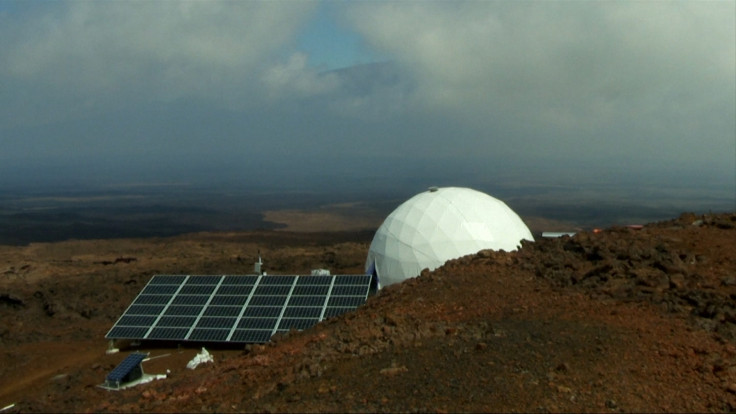Life on Mars: Scientists begin year-long isolation experiment in Hawaii to simulate conditions of Red Planet
Six scientists have started a year long isolation experiment inside a small dome in Hawaii in order to simulate what life will be like for astronauts on a future manned mission to Mars.
The latest mission from Hawaii Space Exploration Analog and Simulation (Hi-Seas), a study run by the University of Hawaii, will see the six scientists from across the globe spend 365 days inside the dome near a volcano in Mauna Loa, Hawaii.
The $1.2m (£0.8m) mission, funded by Nasa, will analyse the effects of extended isolation on a small group of individuals in preparation for long-duration manned missions in the future. It is estimated the first manned mission to the Red Planet could last one-three years.
The scientists said before entering the habitat that they were going to miss their loved ones and that it would be interesting to see how their relationship with their fellow crew members changes over the year.

"Iʻm a pilot and I'm gonna miss flying," said Andrzej Stewart, the only pilot in the mission. "Iʻm gonna be stuck in the ground both feet in the dirt for a whole year."
"The wind in your face. The sun. I'm gonna miss that a lot," said Sheyna Gifford, another scientist participating in the 365-day mission.
"The main thing that's new about this mission is its sheer length, so as you might imagine, as the group gets to know each other, that whole dynamic changes over time," said fellow crew member Kim Binsted.
The scientists will be under constant video surveillance in the 36ft high by 20ft diameter dome. The structure will not allow access to fresh air or food, which instead will be provided in packets and cans. The previous longest isolation experiment, also ran by Hi-Seas, lasted eight months.
© Copyright IBTimes 2025. All rights reserved.






















